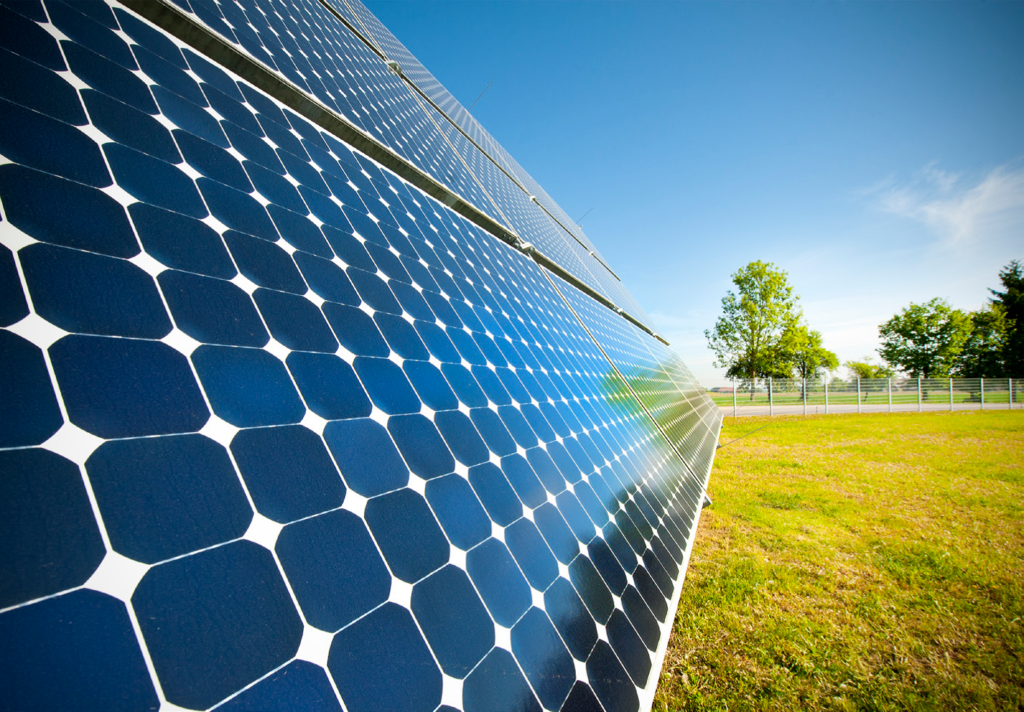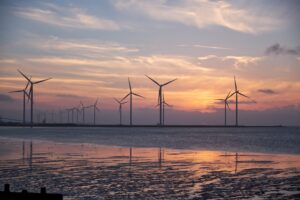The Commerce Ministry on Friday released a roadmap to shift Japan’s economy away from fossil fuels and encourage the growth of green energy industries to put Prime Minister Yoshihide Suga’s pledge to eliminate net emissions of carbon dioxide by 2050 on track.
The report, which calls for heavy government spending to subsidize and incentivize emissions reductions and innovation in more than a dozen industries, details the potential economic growth that can be expected if the country achieves net zero carbon emissions.
Japan Times also reported that, not only does the plan provide a tentative framework to support Suga’s promise in October to achieve decarbonization in three decades, but it represents a major shift in the attitude of the central government in treating renewable energy not as a barrier to economic growth but as a catalyst.
“Diving from fossil fuels, switching to renewable energy and eliminating carbon emissions should not be seen as a restriction of economic activity, but as an opportunity to take advantage of the inevitable change,” an official from the Ministry of Commerce told reporters. “The central government will support the private sector to lead the change towards a carbon-free society.”
The report names 14 industries where significant growth and investment are key to achieving decarbonization. These include offshore wind, ammonia fuel, hydrogen, nuclear power, automobiles, shipping, airlines, semiconductors, logistics, agriculture, carbon recycling, housing, energy recycling, and individual people’s lifestyles.
According to the Ministry of Commerce scheme, the government aims to increase offshore wind energy production to 45 million kilowatt-hours by 2040, hydrogen energy consumption to 20 million tons by 2050, promote nuclear power in the overseas but halt domestic projects, decarbonize the agricultural industry, and reduce energy consumption from coal to the point where carbon recycling technology can be developed to nullify the remaining harmful emissions.
By targeting these industries, the Ministry of Commerce aims to mobilize more than 240 trillion yen in private sector savings through investments, regulation, subsidies, and tax incentives. In doing so, it expects the cumulative economic impact to reach 90 trillion yen by 2030 and 190 trillion yen by 2050.
While the plan is tentative, officials said the government would start taking action where it could as soon as possible. They added that the plan was only a projection and that its implementation will depend on the country’s energy portfolio, which is decided through a Strategic Energy Plan that will be reviewed sometime before June 2021, pending the government discussions that began. in October of this year.
Still, questions remain about the country’s willingness to reform the world’s third-largest economy and reduce harmful greenhouse gas emissions to reduce climate change. Japan is also the fifth largest emitter of carbon dioxide in the world.
Read more on: Japan plans to install up to 45 GW of offshore wind power by 2040
The government aims to reduce the more than 1 billion tons of greenhouse gases the country emitted in 2018, according to the Commerce Ministry, to 930 million in 2030 and net zero by 2050.
At the same time, the ministry projects that domestic electricity demand will grow between 30% and 50% by 2050. Electricity accounted for 37% of the country’s carbon emissions in 2018, while 25% came from manufacturing. , 17% from transport and 10% from homes and companies.
The government also aims to ban the sale of new gasoline-powered cars in the first half of the 2030s. Commerce Ministry officials said the country aims to announce sometime during the summer of 2021 its plan to make everyone new commercial and passenger vehicles are fully electric.
However, the plan will not prohibit the sale of hybrid vehicles. The omission has drawn criticism from opponents who say the government is easing the transition from gasoline cars in a bid to appease automakers.
Earlier this month, Tokyo Governor Yuriko Koike announced a nearly identical plan for the city, only different in that the capital will aim to ban the sale of new gasoline cars by 2030.
“Tokyo has led and will continue to lead the country’s efforts to reduce harmful emissions,” Koike said during an exclusive interview on Wednesday. “By setting ambitious goals, the capital can boost the country.”
Suga’s announcement in October that Japan would strive to achieve net zero carbon dioxide emissions by 2050, as required of all countries in the 2015 Paris Agreement, was met with skepticism and doubt by supporters and critics. .
Climate advocates criticized his commitment to nuclear power and carbon capture technology, while many private sector corporations in the energy industry resisted backing a plan that would almost certainly change their business models.
“With the economy and the environment positioned as two pillars of the country’s growth, my administration will do its best to achieve a green society,” Suga said in October. “It should be understood that countermeasures against global warming could transform the economy and foster growth, not hinder it.”
The Paris Agreement calls on nations to keep global warming from exceeding 2 degrees Celsius above pre-industrial levels, a critical benchmark that scientists say would trigger the beginning of a collapse in many of Earth’s ecosystems and spell disaster for humankind.
Source: Japan Times




